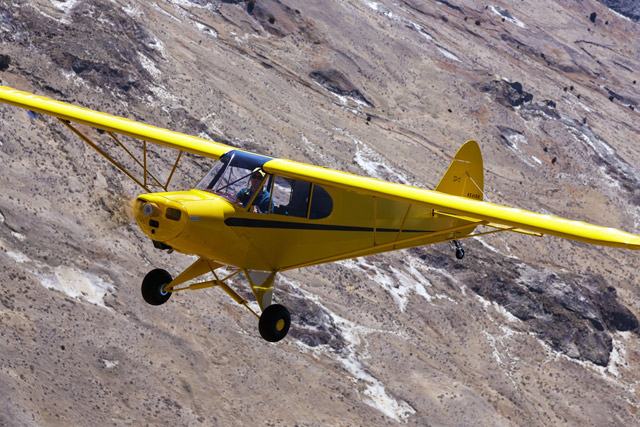Transitioning to aircraft includes avionics, too.

What type of aircraft transition most interests you?
Source: Aviation eBrief
To larger, faster aircraft 34 %
To smaller, slower aircraft 12%
Between certified and Experimental aircraft 13 %
Aircraft with different avionics setups 7 %
More than one of the above 34 %
Recent surveys from Aviation eBrief, published by AOPA, include one showing that the majority of pilots associate the word transition with moving up to bigger and faster airplanes. The least interest was indicated in transitioning to new avionics, but that deserves equal footing with flying a big aircraft that has big ramp appeal.
Let’s look at moving up to the big stuff first, as explained in an interactive new online training course from the AOPA Air Safety Institute (ASI) called “Transitioning to Other Airplanes.” You’ll find it online.
Not done correctly, transitioning to a larger aircraft can and has contributed to accidents. Most of them are because of loss of control and loss of situational awareness. Think of it as a mini type rating. Knowing the wing loading and power loading of the aircraft can tell you a lot as to how it will perform, and how nimble it is. The wing of a Beechcraft Baron is working much harder than that of a Piper Cub to keep you in the air. The engine of an Aeronca Champ is pulling a much higher load per horsepower than that of an Epic Aircraft turboprop.
The ASI course suggests a very cautious first takeoff in an aircraft that is new to you. Before you go, know the aircraft’s emergency procedures, systems, limits, and proper speeds for climbs, descents, turbulent air, and landing.
Remember, everything is new, even the way you are seated. The airfoil may be one you have not flown before, and the engine may need special handling. It can be easy to get overwhelmed—better known as getting behind the airplane. There’s a lot to do on that first flight. You’ll want to think about a checklist flow, where you perform tasks automatically—backed up by the actual checklist. Do you know the aircraft’s warning system for stalls? How does it react? Some aircraft buffet, but others are happy to mush forward with little drama except for a huge rate of descent.
Halfway through the ASI course you’ll have the option to specialize, sort of like choosing a major in college. Choices include not only moving up, but moving down. Some of the biggest transition problems in the past decade have occurred when pilots of heavier aircraft move down to the Light Sport aircraft category. The tendency is to overcontrol, especially during landing. Other choices including a move sideways to a similar aircraft, but built by a different manufacturer. A final choice is “avionics.”
Quite often the attitude is one of overconfidence when addressing the transition to avionics. Learn the basics of the new avionics system first, and add bells and whistles later. Just turning on an avionics system can result in a checklist twice as long as that for an analog system. Don’t try to figure out the avionics system while moving. Stop, enter the information, and then move the aircraft.
The course tells a frightening tale of the pilot of a Van’s RV–10 aircraft who asked his friend to be pilot in command under instrument conditions. The aircraft crashed after several failed attempts at making an instrument approach. The aircraft should not be flown under instrument conditions until there has been time to explore the avionics system in good weather.
Read the airplane’s pilot operating handbook cover to cover, and then work out a proficiency schedule so that practice is periodically performed. When you think you are ready, consider asking yourself the ultimate question—and it’s not, “Do you feel lucky, punk?” The course instead suggests you consider whether you are ready to fly with family members aboard.
Email [email protected]
Help for learning avionics
Check online to see if the manufacturer has a downloadable simulator for its avionics products. There may also be online training, or even classroom training at the manufacturer’s headquarters or at flight schools. Owner manuals often can be downloaded. —AKM



